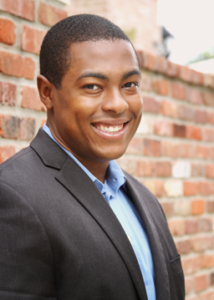
Silence and Real Talk: On Teaching about the Bible and Race in the USA
When I signed up to teach the Bible and Race in the USA, I didn’t know that my students would be able to live stream the lynching of Eric Garner and Tamir Rice. No one told me that modern courtrooms would accept a testimony from one who could liken Michael Brown to a demon.
And did I mention that my undergraduate seminar was divided evenly along the color line—three white students with two black students and myself?
Colleagues at my new school were excited and nervous for me. No one knew what to make of this demographic studying this curriculum at this moment in time. This course was to be a chance for some “real talk”—an honest, nuanced conversation about the racialized state of our union.
The class set out to observe the intersection of two of America’s most effective difference-making technologies, scriptures (in this case, the Bible) and race. We would note how both have worked to make difference and make a difference in this country.
Every two weeks we focused on a different people group and their complicated relationship with the Bible. We perused documentation of the Bible’s role in settler-colonialism, enslavement and emancipation, the construction of whiteness, the model minority myth, anti-immigrant discourse, and the war on terror. Similarly, ethnographies offered us a look at the Bible’s liberating work in aversely effected communities.
From theory to history, the content just “clicked,” but the conversation was just painful…painfully silent. When they did raise their voices, it was to offer post-racial platitudes. But more often than not, students opted to simply nod their heads in quiet safety.
A quarter of the semester in, I thought aloud with a colleague who suggested I listen for murmurs of “real talk” and redirect my efforts toward what was working. I was to listen for vulnerability, disagreement, and passion.
Lo and behold, I found real talk in the last place I expected.
I was using three types of assignments to formally assess learning. At the top of the scaffold was a major research paper—proposed as a midterm and executed as a final project. Students drafted their own theories about the Bible and Race as evidenced in the American experience. Historical moments, headline news, cultural expressions were all up for grabs. But this early in the course, students saw this as just another test.
They worked up to the capstone project by presenting seminar papers at the end of each unit. The exchange was pretty stiff, but for a few minutes the class would liven up as they discussed media clips the presenters used to illustrate their theses.
The same energy ran rampant in our mid-unit class diary. Students extended emerging understandings to images, news stories, and other examples they had come across. It’s worth noting that I was giving little-to-no feedback on this completion grade.
In my mind, this assignment was a low-level practice activity, but in it I found the dynamism we were missing in class. I was floored when a white student respectfully qualified a classmate’s assumption about Asians as “perfect immigrants” by contrasting it with the anti-Japanese sentiment around WWII. An African American student hosted a theory podcast where she worked out headier concepts by relating them to stories from her own experience.
In the diary activity, they didn’t have to worry about me intervening or correcting. Students were free to talk, to make mistakes, to offend each other. If they didn’t have the chance to challenge themselves and challenge each other uninterrupted, how could they develop the critical empathy that the course aimed to produce? My silence was leaving space for the trust-building that real talk requires.
To build upon this kind of exchange, I replaced my interventionist strategy with a “chief learner” approach, finding opportunities for students to teach me about our subject matter. I had my local students pull up a map and show me—the newest Pennsylvanian in the room— how Frederick Douglass got to Quakertown, our proximity to Gettysburg, and where the Carlisle Indian School was located. As they gave me the lay of the land, I was able to problematize the Bible’s role at each site.
By course’s end, we were asking which, when, whether, and how #BlackLivesMatter on our own historically-Christian campus. I’m not sure if we could have begun the semester with real talk, but I like to think of where we ended as a sign that the best is yet to come.